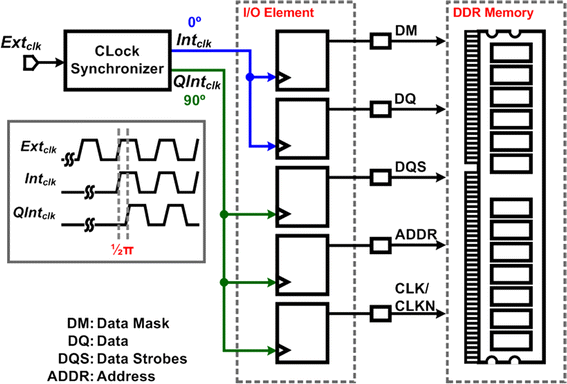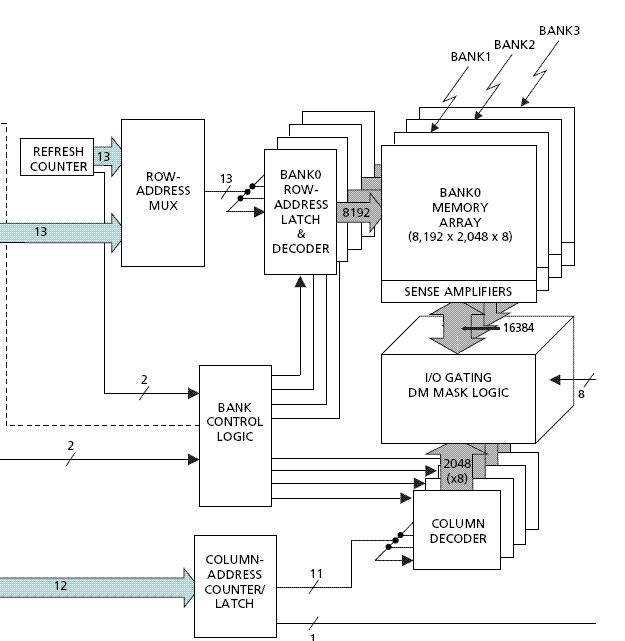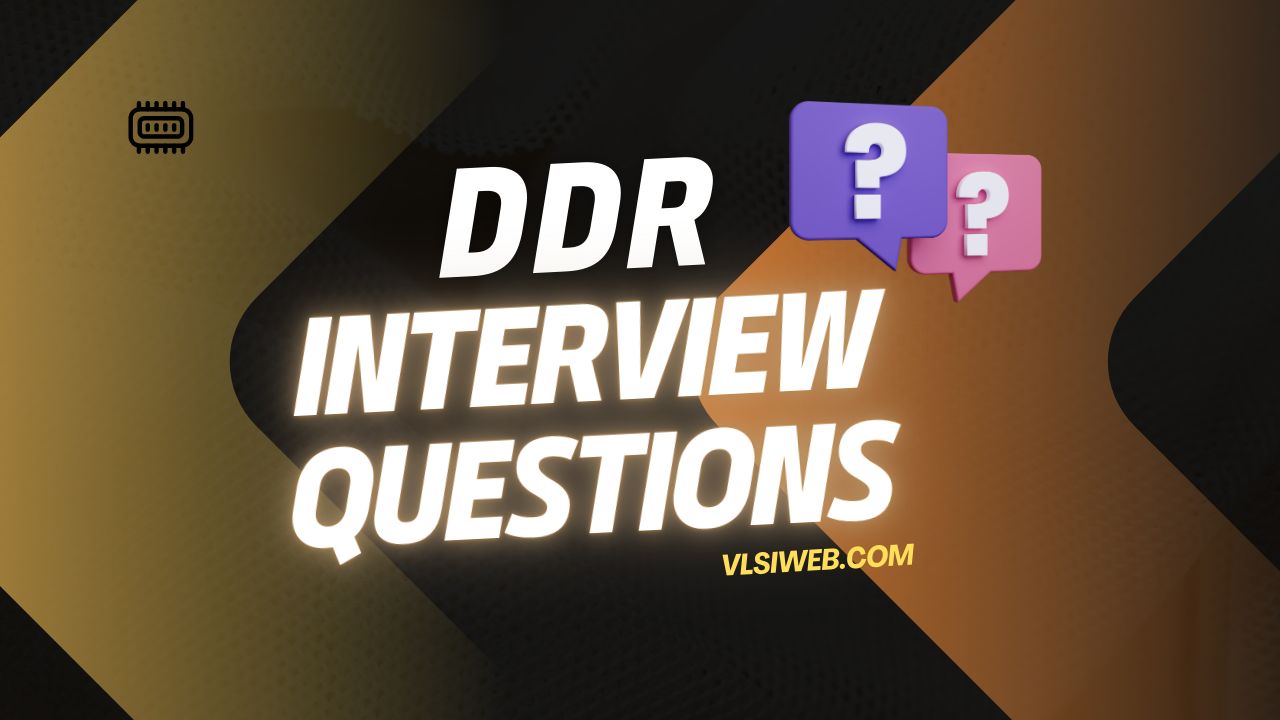In this section, we will provide a comprehensive list of DDR protocol interview questions that are commonly asked in VLSI (Very Large Scale Integration) interviews. These questions will cover various aspects of the DDR protocol and will help you prepare for your upcoming interview.
Whether you are a fresh graduate or an experienced professional, understanding the DDR protocol is essential for success in VLSI interviews. The DDR protocol plays a crucial role in modern memory systems, and interviewers often assess candidates’ knowledge and expertise in this area.
By familiarizing yourself with these DDR interview questions, you will gain a better understanding of the protocol’s intricacies and be well-prepared to showcase your skills during interviews. From basic concepts to advanced topics, we have compiled a comprehensive set of interview questions to help you excel in VLSI interviews.
Table of Contents
Introduction to DDR Protocol
In this section, we will provide a brief introduction to the DDR protocol. We will explain what DDR stands for, its significance in VLSI, and how it is used in various applications. This section will lay the foundation for the subsequent interview questions.
The DDR protocol, which stands for Double Data Rate, is a crucial component in the field of Very Large Scale Integration (VLSI). It is a memory technology that allows for faster data transfer between the memory and the processor.
DDR has revolutionized the world of computing by significantly increasing memory bandwidth, thereby enhancing the performance of electronic devices. It offers improved data transfer rates by enabling data to be transferred on both the rising and falling edges of the clock signal, effectively doubling the data rate. This advancement has made DDR the preferred choice for a wide range of applications, including smartphones, laptops, gaming consoles, and networking equipment.
The use of DDR in VLSI circuits has become ubiquitous due to its superior data transfer capabilities, lower power consumption, and compatibility with existing systems. The DDR protocol plays a critical role in the design and implementation of memory interfaces, ensuring efficient communication between the memory and logic devices.
One of the key advantages of the DDR protocol is its ability to transmit data at a higher speed compared to its predecessor, the SDR (Single Data Rate) protocol. This speed improvement is achieved through a combination of sophisticated circuit design techniques, advanced timing control, and data encoding schemes.
Moreover, DDR offers various data transfer modes, such as DDR2, DDR3, DDR4, and the latest DDR5. Each successive generation provides increased bandwidth and improved performance, making it essential for VLSI engineers to stay up-to-date with the latest DDR standards.
| DDRR Protocol Generations | Year Launched | Key Features |
|---|---|---|
| DDR2 | 2003 | Increased speed and reduced power consumption |
| DDR3 | 2007 | Higher data transfer rates and lower power consumption compared to DDR2 |
| DDR4 | 2014 | Significantly increased bandwidth and improved power efficiency |
| DDR5 | 2020 | Ultra-fast data rates, higher capacity, and advanced error correction |
As DDR technology continues to evolve, VLSI professionals must have a solid understanding of the DDR protocol. In the following sections, we will delve into specific interview questions related to DDR, helping you prepare for VLSI interviews with confidence.

Basic DDR Protocol Interview Questions
As a VLSI engineer, it is essential to have a strong understanding of the DDR protocol and its fundamental concepts. In this section, we will explore some basic interview questions related to DDR. These questions will help you evaluate your knowledge of data transmission, clocking, and memory organization in DDR systems.
1. Explain the basic concept of the DDR protocol.
The DDR protocol, or Double Data Rate protocol, is a type of synchronous dynamic random-access memory (SDRAM) interface. It allows for the transfer of data on both the rising and falling edges of the clock signal, effectively doubling the data transfer rate compared to traditional SDRAM.
2. What are the key features of DDR memory?
DDR memory has several key features that make it suitable for high-performance applications:
- Double data rate: DDR memory transfers data on both the rising and falling edges of the clock signal.
- Higher data transfer rates: DDR memory provides faster data transfer rates compared to conventional SDRAM.
- Increased bandwidth: DDR memory allows for increased bandwidth by transferring more data per clock cycle.
- Improved power efficiency: DDR memory operates at lower voltages, resulting in improved power efficiency.
Understanding these features is crucial for designing efficient DDR-based systems.
3. How does data transmission work in DDR systems?
Data transmission in DDR systems involves sending data on both the rising and falling edges of the clock signal. This effectively doubles the data transfer rate compared to single data rate systems. The data is transferred serially using differential signaling, which minimizes noise and improves signal integrity.
4. What is clocking in DDR systems?
Clocking in DDR systems refers to the synchronization of data transfers with the clock signal. DDR memory devices use a phase-locked loop (PLL) to generate an internal clock signal that is synchronized with the external clock. This ensures accurate data transfer and reliable operation of the memory system.
5. How is memory organized in DDR systems?
In DDR systems, memory is organized into banks, rows, and columns. The memory array is divided into multiple banks, each containing rows and columns. Accessing data involves specifying the bank, the row within the bank, and the column within the row. This hierarchical organization allows for efficient memory access and reduces latency.
To summarize, these basic DDR protocol interview questions will gauge your understanding of data transmission, clocking, and memory organization. Familiarize yourself with these concepts to confidently tackle DDR-related questions in your VLSI interviews.
Advanced DDR Protocol Interview Questions
In this section, we will explore advanced interview questions related to the DDR protocol. These questions are designed to test your in-depth knowledge of advanced concepts such as timing constraints, power consumption, and signal integrity in DDR systems. By answering these questions, you will showcase your expertise in DDR protocol and demonstrate your ability to tackle complex design challenges in VLSI.
1. Timing Constraints in DDR Systems
Timing constraints play a crucial role in DDR systems to ensure accurate data transfer between the memory controller and the memory devices. Here are a few questions to assess your understanding:
- What are setup and hold time constraints in the DDR protocol?
- How do you calculate the clock-to-data transfer time in DDR systems?
- Explain the concept of skew and its impact on timing constraints.
2. Power Considerations in DDR Systems
Efficient power management is essential in DDR systems to optimize performance and reduce energy consumption. Consider the following questions:
- How do you estimate the power consumption of a DDR memory subsystem?
- What techniques can be employed to minimize power consumption in DDR systems?
- Explain the relationship between voltage scaling and power consumption in DDR devices.
3. Signal Integrity in DDR Systems
Maintaining signal integrity is critical in DDR systems to ensure reliable data transmission and prevent signal degradation. Here are a few questions to gauge your knowledge:
- What are the common signal integrity challenges in DDR systems?
- How can you mitigate signal integrity issues in DDR designs?
- Explain the purpose of termination and impedance matching in DDR systems.
| Interview Question | Brief Explanation |
|---|---|
| What are setup and hold time constraints in the DDR protocol? | Setup time is the minimum time before the clock edge when data must be stable, while hold time is the minimum time after the clock edge when data must remain stable. Violating these constraints can lead to data corruption. |
| How do you calculate the clock-to-data transfer time in DDR systems? | The clock-to-data transfer time is the difference between the data arrival time (DAT) and the clock edge time. It determines the maximum permissible delay between the clock edge and the arrival of valid data. |
| How do you estimate the power consumption of a DDR memory subsystem? | The power consumption of a DDR memory subsystem can be estimated by considering factors such as the operating voltage, data transfer rate, capacitance, and activity factors of various components. |
| What are the common signal integrity challenges in DDR systems? | Common signal integrity challenges in DDR systems include reflections, crosstalk, ringing, and timing violations. These issues can degrade signal quality and lead to data errors. |
Design and Implementation Interview Questions
In this section, we will explore design and implementation interview questions that focus on the DDR protocol. These questions are specifically designed to evaluate your expertise in designing DDR-based systems and your ability to optimize system performance. Let’s dive into the key topics:
1. Layout Considerations
When designing a DDR-based system, layout considerations play a crucial role in ensuring signal integrity and minimizing noise. Here are some sample questions:
- What are the critical layout guidelines to follow for DDR routing?
- How do you handle power and ground planes in DDR layout?
- What are the best practices for controlling trace lengths and impedance matching?
2. PCB Design
PCB design plays a vital role in DDR system implementation. Understanding the key aspects of PCB design is essential to ensure reliable data transfer. Here are a few questions you may encounter:
- What are the challenges associated with DDR routing on a multi-layer PCB?
- How do you optimize PCB stack-up for DDR signal integrity?
- What techniques do you use to minimize crosstalk and noise in DDR PCB design?
3. System-Level Optimization
Optimizing DDR-based systems requires a deep understanding of system-level factors that can impact performance. Here are some questions related to system-level optimization:
- What techniques do you employ to minimize latency in DDR systems?
- How do you optimize the timing of DDR signals to improve data transfer rates?
- What are the trade-offs between power consumption and performance in DDR systems?
By preparing for these design and implementation interview questions, you will demonstrate your expertise in DDR protocol and your ability to design efficient and high-performance DDR-based systems.

Tips for Acing DDR Protocol Interviews
When it comes to excelling in DDR protocol interviews, it’s essential to not only have a solid understanding of the DDR protocol but also to demonstrate your expertise and practical experience. Here are some valuable tips and strategies that will help you make a lasting impression on your interviewer:
- 1. Thoroughly prepare: Familiarize yourself with the DDR protocol by studying resources, textbooks, and online materials. Ensure you understand the fundamental concepts, such as data transmission, clocking, and memory organization. Additionally, review advanced topics like timing constraints, power consumption, and signal integrity.
- 2. Practice with sample questions: Take the time to practice answering DDR protocol interview questions to boost your confidence and improve your response time. Look for sample questions online or use study guides specifically designed for VLSI interviews. As you practice, pay attention to both technical accuracy and clarity in your explanations.
- 3. Showcase your practical experience: While theoretical knowledge is crucial, interviewers also value practical experience. Highlight any relevant projects you have worked on that involved implementing the DDR protocol. Be prepared to discuss your role, the challenges faced, and the solutions you utilized to overcome them. Use specific examples to demonstrate your expertise.
- 4. Stay up-to-date with industry trends: The field of VLSI is constantly evolving, and interviewers appreciate candidates who stay informed about the latest advancements in DDR technology. Keep yourself updated with industry publications, research papers, and leading manufacturers’ websites to showcase your interest and dedication to the field.
- 5. Communicate effectively: During the interview, make sure to articulate your thoughts clearly and concisely. Focus on providing structured and logical answers while demonstrating your problem-solving skills. Pay attention to the interviewer’s questions and ask for clarification if needed before providing your response.
- 6. Be confident and professional: Approach the interview with confidence and a professional demeanor. Dress appropriately, maintain good eye contact, and exhibit a positive attitude. Emphasize your ability to work well in a team, your willingness to learn, and your adaptability to different challenges.

By following these tips and strategies, you can position yourself as a strong candidate in DDR protocol interviews. Remember to remain calm, showcase your expertise, and demonstrate your passion for VLSI. Good luck!
Conclusion
In conclusion, mastering the DDR protocol is crucial for success in VLSI interviews. By familiarizing yourself with a comprehensive list of DDR interview questions and understanding the intricacies of the DDR protocol, you will be well-equipped to tackle any interview challenge.
Throughout this article, we have covered various aspects of the DDR protocol, including basic and advanced interview questions, design and implementation considerations, and valuable tips for acing DDR protocol interviews.
Remember, the DDR protocol is widely used in VLSI designs, and employers are keen to assess candidates’ knowledge and expertise in this area. By preparing for these interview questions, you will not only demonstrate your understanding of DDR but also showcase your potential as a skilled VLSI professional.
Good luck with your interview preparation, and we hope that the insights shared in this article will not only enhance your knowledge of the DDR protocol but also boost your confidence as you embark on your VLSI interview journey.

